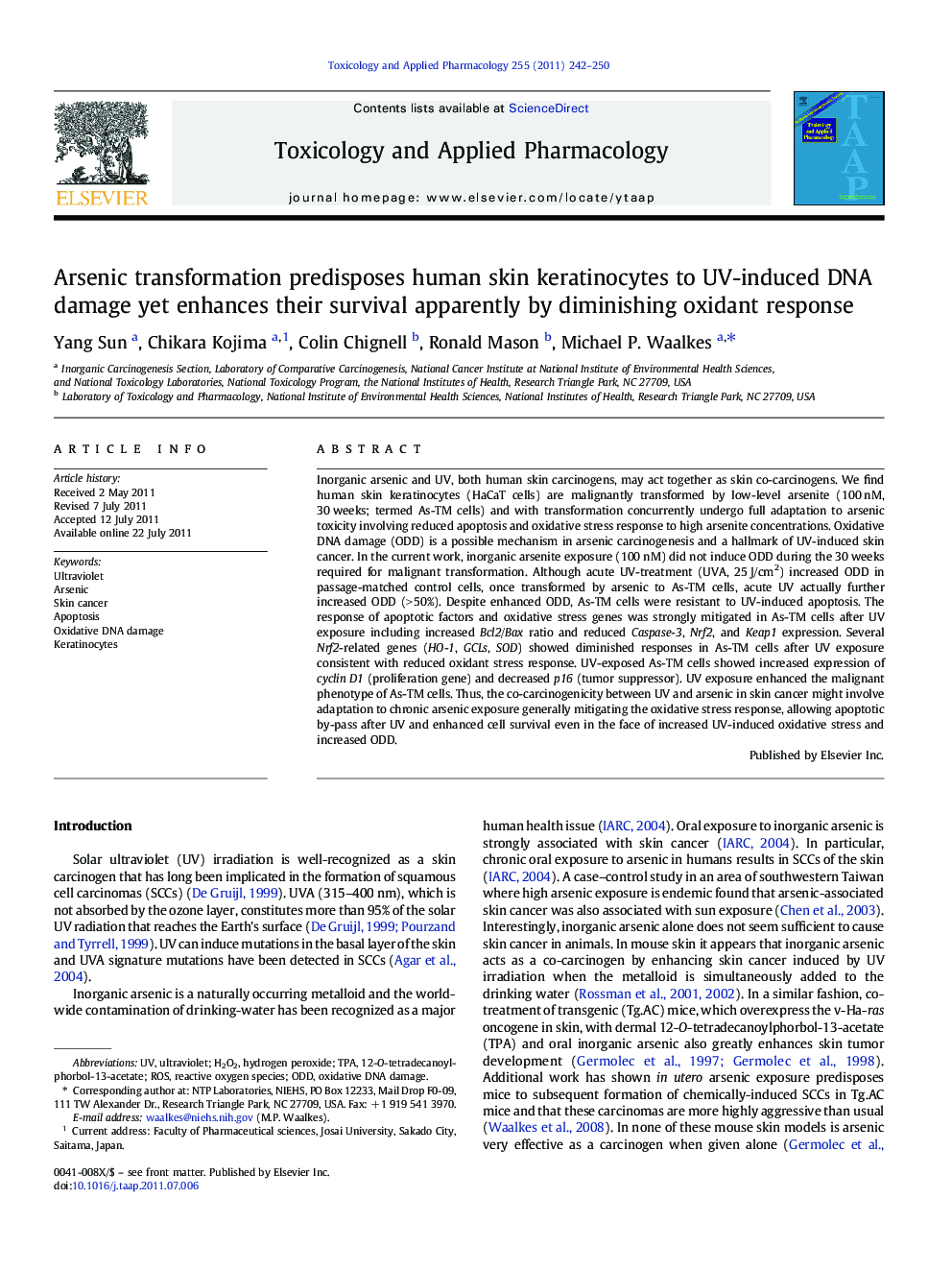| Article ID | Journal | Published Year | Pages | File Type |
|---|---|---|---|---|
| 2569338 | Toxicology and Applied Pharmacology | 2011 | 9 Pages |
Inorganic arsenic and UV, both human skin carcinogens, may act together as skin co-carcinogens. We find human skin keratinocytes (HaCaT cells) are malignantly transformed by low-level arsenite (100 nM, 30 weeks; termed As-TM cells) and with transformation concurrently undergo full adaptation to arsenic toxicity involving reduced apoptosis and oxidative stress response to high arsenite concentrations. Oxidative DNA damage (ODD) is a possible mechanism in arsenic carcinogenesis and a hallmark of UV-induced skin cancer. In the current work, inorganic arsenite exposure (100 nM) did not induce ODD during the 30 weeks required for malignant transformation. Although acute UV-treatment (UVA, 25 J/cm2) increased ODD in passage-matched control cells, once transformed by arsenic to As-TM cells, acute UV actually further increased ODD (> 50%). Despite enhanced ODD, As-TM cells were resistant to UV-induced apoptosis. The response of apoptotic factors and oxidative stress genes was strongly mitigated in As-TM cells after UV exposure including increased Bcl2/Bax ratio and reduced Caspase-3, Nrf2, and Keap1 expression. Several Nrf2-related genes (HO-1, GCLs, SOD) showed diminished responses in As-TM cells after UV exposure consistent with reduced oxidant stress response. UV-exposed As-TM cells showed increased expression of cyclin D1 (proliferation gene) and decreased p16 (tumor suppressor). UV exposure enhanced the malignant phenotype of As-TM cells. Thus, the co-carcinogenicity between UV and arsenic in skin cancer might involve adaptation to chronic arsenic exposure generally mitigating the oxidative stress response, allowing apoptotic by-pass after UV and enhanced cell survival even in the face of increased UV-induced oxidative stress and increased ODD.
► Arsenic transformation adapted to UV-induced apoptosis. ► Arsenic transformation diminished oxidant response. ► Arsenic transformation enhanced UV-induced DNA damage.
